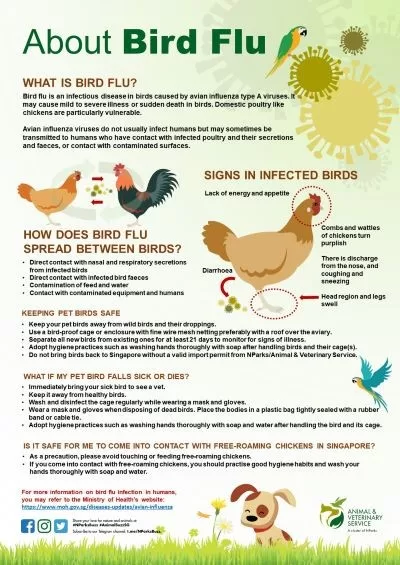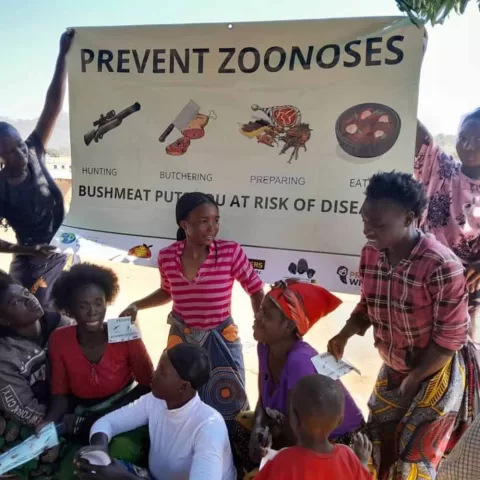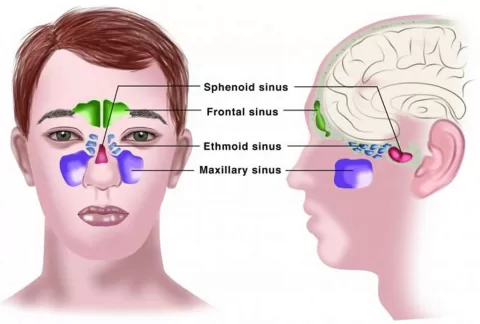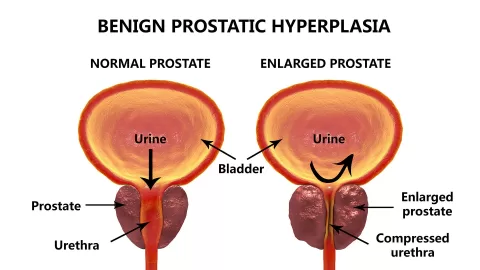A crucial bird flu warning has been issued by the Health Protection Surveillance Centre after the alarming discovery of 19 dead birds linked to the virus in Ireland. This heightened alert comes as authorities confirm the presence of the H5N1 strain, a variant of avian influenza known for its serious health implications. As fears of bird flu escalate across the nation, health officials urge the public to refrain from touching or handling sick or deceased wild birds to mitigate the risks associated with this wild birds disease. The spread of H5N1 could pose a significant threat not only to poultry but also to human health, complicating the overall avian influenza situation. With the rising case reports, it is vital to stay informed and take the necessary precautions to protect both public health and the local ecosystem.
In response to the recent health crises, the alarm regarding avian flu outbreaks has reverberated throughout communities in Ireland. The emergence of the H5N1 strain, characterized as a variant of avian influenza, has prompted swift action from the Health Protection Surveillance Centre and the Department of Agriculture to address potential risks. Authorities stress that the disease can predominantly affect wild birds and occasionally pose a threat to other species, including humans. As the focus on this infectious wild birds disease intensifies, public awareness and vigilance are paramount to ensure safety and compliance with health recommendations. Through the monitoring of bird populations and reporting mechanisms, Ireland can better manage the challenges posed by this emerging health risk.
Understanding Bird Flu: An Overview of Avian Influenza
Bird flu, also referred to as avian influenza, is primarily a viral infection that affects wild birds and poultry operations worldwide. The H5N1 strain, notorious for its potential to cause high mortality rates, has become a significant concern for health authorities globally, due to its sporadic occurrences in humans. While bird flu mainly impacts avian species, the risk it poses to humans has led to increased vigilance particularly when outbreaks occur in certain regions, like Ireland.
The recent bird flu warning issued by the Health Protection Surveillance Centre in Ireland highlights the need for public awareness regarding this disease. As cases have been reported, with 19 wild birds testing positive for H5N1 from January to March, understanding the lifecycle of the virus and its transmission pathways becomes essential. The correlation between wild birds and domestic poultry emphasizes the importance of monitoring and controlling avian influenza to prevent any potential crossover into human health.
Bird Flu Warning: Health Protection Centre Issues Alert
In light of the recent discovery that 19 birds have succumbed to the deadly H5N1 strain of avian influenza, the Health Protection Surveillance Centre has initiated a bird flu warning to alert the public and relevant stakeholders. This warning underlines the crucial message that handling sick or deceased wild birds can lead to potential health risks due to the constant threat of infection. The ongoing surveillance and data collection, especially in regions like Ireland, are vital to curbing the spread of this virus.
The current alert coincides with public fears over rising reports of avian influenza on both sides of the Irish border. Authorities stress the importance of compliance with health advisories and the use of platforms such as the Avian Check app for reporting sick bird sightings. Public cooperation is essential for monitoring the situation effectively and ensuring that outbreaks are contained and managed swiftly.
Impact of H5N1 Strain on Wild Birds and Poultry
The H5N1 strain of bird flu has been identified as a severe threat to wild birds and domestic poultry because of its high mortality rates. Given its ability to spread rapidly among bird populations, there is a pressing need for health protection initiatives to mitigate risks associated with avian influenza. The recent situation in Ireland, where wild birds tested positive for the H5N1 virus, serves as a wake-up call for communities to be vigilant and proactive in their monitoring efforts.
Health officials emphasize that while the risk to human beings remains relatively low at this time, the possibility of mutations in the virus calls for heightened awareness. Public health assessments indicate that if the virus transitions into a more transmissible form, it could pose unprecedented challenges for both human and animal health. This underlines the urgency for sustained public education on the risks of avian diseases and ways to minimize infection.
Preventative Measures Against Bird Flu Transmission
To minimize the risk of bird flu transmission, health authorities recommend several key preventative measures. The foremost advice is to avoid any interactions with sick or dead wild birds, as this could lead to infection. Instead, individuals are urged to report any sightings to the Health Service Executive and utilize the Avian Check app for efficient communication of potential outbreaks. This proactive approach assists in ongoing surveillance measures, ultimately safeguarding public health.
Additionally, the Department of Agriculture reiterates the importance of biosecurity practices among poultry farmers. The implementation of strict measures in commercial poultry farms can significantly reduce the risks associated with avian influenza spreading to domestic birds. Monitoring for symptoms in both wild and domestic birds, as well as vaccination protocols where applicable, are crucial components in the fight against bird flu.
Monitoring and Responding to Bird Flu Cases in Ireland
Ireland’s ongoing monitoring of bird flu cases highlights the government’s commitment to public health safety. With the recent confirmations of H5N1 on both sides of the border, a coordinated response involving multiple government entities has been initiated. This includes enhanced surveillance, public communication strategies, and reporting systems to track the situation effectively. The deployment of interactive maps and real-time updates through governmental channels aids in keeping the public informed.
In addition, health protection agencies are prepared to respond quickly to any new infections that may arise. Individuals who come into contact with infected birds are monitored carefully, and as a precautionary measure, may receive antiviral treatments or vaccinations if necessary. This thorough approach underscores the seriousness with which health authorities are treating the potential risks associated with avian influenza.
Public Awareness and Education on Avian Influenza
Raising public awareness about avian influenza is crucial for encouraging safe practices among communities. Informative campaigns by the Health Protection Surveillance Centre emphasize the significance of recognizing the symptoms of bird flu and understanding the implications of the H5N1 strain. Educational resources provided to the public, such as online guides and community workshops, play an essential role in dispelling myths and reinforcing compliant behavior towards sick or dead birds.
Moreover, the interaction between wild birds and human environments necessitates continuous education about the potential risks of avian diseases. By fostering a culture of awareness and precaution, authorities hope to mitigate the impact of any further outbreaks. They stress that informed citizens are key players in preventing the dispersal of avian influenza and ensuring collective safety.
Health Authorities Collaborate to Tackle Bird Flu
The collaborative efforts between various health authorities and the government are essential in tackling the issue of avian influenza. These partnerships enable a more comprehensive approach to monitoring and response, allowing for effective information sharing and resource allocation. The Health Protection Surveillance Centre and the Department of Agriculture are working closely to ensure that all potential cases of H5N1 are swiftly identified and managed.
With the current realities of bird flu cases in Ireland, this collaboration also extends to veterinary professionals and wildlife experts who provide valuable insights into the patterns of transmission and spread among wild birds. The incorporation of expert knowledge into public health policies enhances the readiness and resiliency of the health system against potential avian influenza outbreaks.
The Risk of Avian Influenza Mutations
Understanding the risk of mutations in the avian influenza virus, particularly the H5N1 strain, is a critical aspect of public health preparedness. Experts caution that while currently, the virus poses a low risk to humans, the potential for genetic changes could alter this dynamic. The zoonotic nature of the disease—a characteristic that allows it to transfer from birds to humans—raises concerns about future outbreaks, especially if the virus adapts to human transmission.
Continued research and surveillance are required to monitor any mutations that could enhance the virus’s transmissibility. Public health initiatives must remain vigilant to address the complexities of avian influenza, maintaining a balance between protecting the poultry industry and safeguarding human health. As the situation evolves, it is vital for authorities to keep the public informed to ensure timely responses to any emerging threats.
Future Outlook for Avian Influenza Control in Ireland
The future outlook for controlling avian influenza in Ireland will depend heavily on the ability to implement effective strategies and regulations. With health authorities focusing on monitoring, public education, and vaccination efforts, there are optimistic perspectives regarding the management of the H5N1 strain. However, continuing vigilance is necessary as wildlife and domestic environments remain at risk for infection.
Moving forward, fostering partnership programs between various health organizations, agricultural sectors, and the public can greatly enhance avian disease control. Through sustained efforts in education and awareness, along with robust biosecurity measures in poultry farming, Ireland can look to maintain a proactive stance against any resurgence of avian influenza, ensuring the health of both its wildlife and its citizens.
Frequently Asked Questions
What does the recent bird flu warning in Ireland involve?
The recent bird flu warning in Ireland is specifically related to the detection of the H5N1 strain of avian influenza, following the death of 19 wild birds in the region. The Health Protection Surveillance Centre has advised the public against handling sick or dead wild birds, highlighting the ongoing threat of this disease.
How does the H5N1 strain of avian influenza affect wild birds?
The H5N1 strain of avian influenza primarily affects wild birds, leading to illness and death. It has been detected among wild bird populations on both sides of the Irish border, raising concerns about its spread, as confirmed by the Health Protection Surveillance Centre in Ireland.
What precautions should the public take in light of the bird flu warning?
In light of the bird flu warning, the public is advised not to touch or handle sick or dead wild birds. Instead, individuals should report any sightings through the Avian Check app, which helps authorities monitor the situation and assess risks associated with avian influenza.
Is the H5N1 strain currently a threat to human health?
Currently, the H5N1 strain of avian influenza presents a low risk to human health. Experts agree that while it is rare for humans to contract bird flu, monitoring is essential due to the potential for the virus to mutate, which could change the risk dynamics.
What steps are taken if someone comes into contact with sick birds?
If someone comes into contact with sick or dead birds during the bird flu warning, health authorities will monitor them for 10 days. They may also receive antiviral treatment or vaccination if necessary to mitigate the risk of avian influenza.
How can I stay updated on the bird flu warning in Ireland?
To stay updated on the bird flu warning in Ireland, it is recommended to sign up for newsletters from health authorities and follow updates from the Health Protection Surveillance Centre, which provides information on avian influenza outbreaks and related health advisories.
What is the Avian Check app and how does it relate to the bird flu warning?
The Avian Check app is a tool for the public to report sightings of sick or dead wild birds during the bird flu warning. Each report aids health authorities in monitoring avian influenza cases, helping to assess the risk of outbreaks and manage public health responses.
What actions are being taken by health authorities in response to the bird flu situation?
Health authorities, including the Health Service Executive (HSE) and the Department of Agriculture, are actively monitoring bird flu cases, issuing warnings, and advising the public against handling infected birds. They emphasize the importance of reporting sightings through the Avian Check app.
| Key Points | Details |
|---|---|
| Bird Flu Warning | The Health Protection Surveillance Centre (HPSC) has issued a warning due to recent deaths of 19 birds from the H5N1 variant. |
| Geographical Spread | The H5N1 strain has been detected on both sides of the Irish border. |
| Public Advisory | Health authorities advise against touching or handling sick or dead wild birds. |
| Concerns About Human Health | While bird flu poses a low risk to humans, experts caution about potential mutations in the virus. |
| Monitoring and Reporting | The public is encouraged to report dead birds through the Avian Check app to assist in monitoring the situation. |
Summary
A bird flu warning has been issued due to the detection of H5N1 in several dead birds. Authorities are urging the public to avoid contact with wild birds and to report sightings to help track the outbreak. Though currently low risk to humans, experts remain vigilant about the potential for the virus to mutate and pose greater threats. Staying informed through official channels is crucial in navigating this health concern.
The content provided on this blog (e.g., symptom descriptions, health tips, or general advice) is for informational purposes only and is not a substitute for professional medical advice, diagnosis, or treatment. Always seek the guidance of your physician or other qualified healthcare provider with any questions you may have regarding a medical condition. Never disregard professional medical advice or delay seeking it because of something you have read on this website. If you believe you may have a medical emergency, call your doctor or emergency services immediately. Reliance on any information provided by this blog is solely at your own risk.








